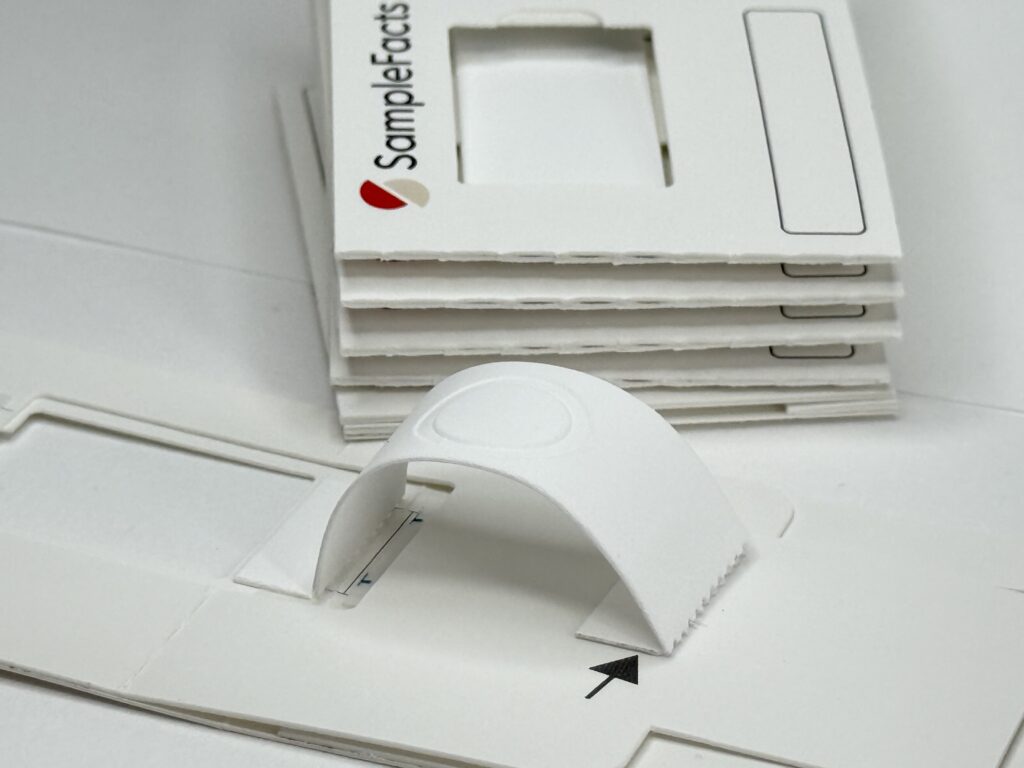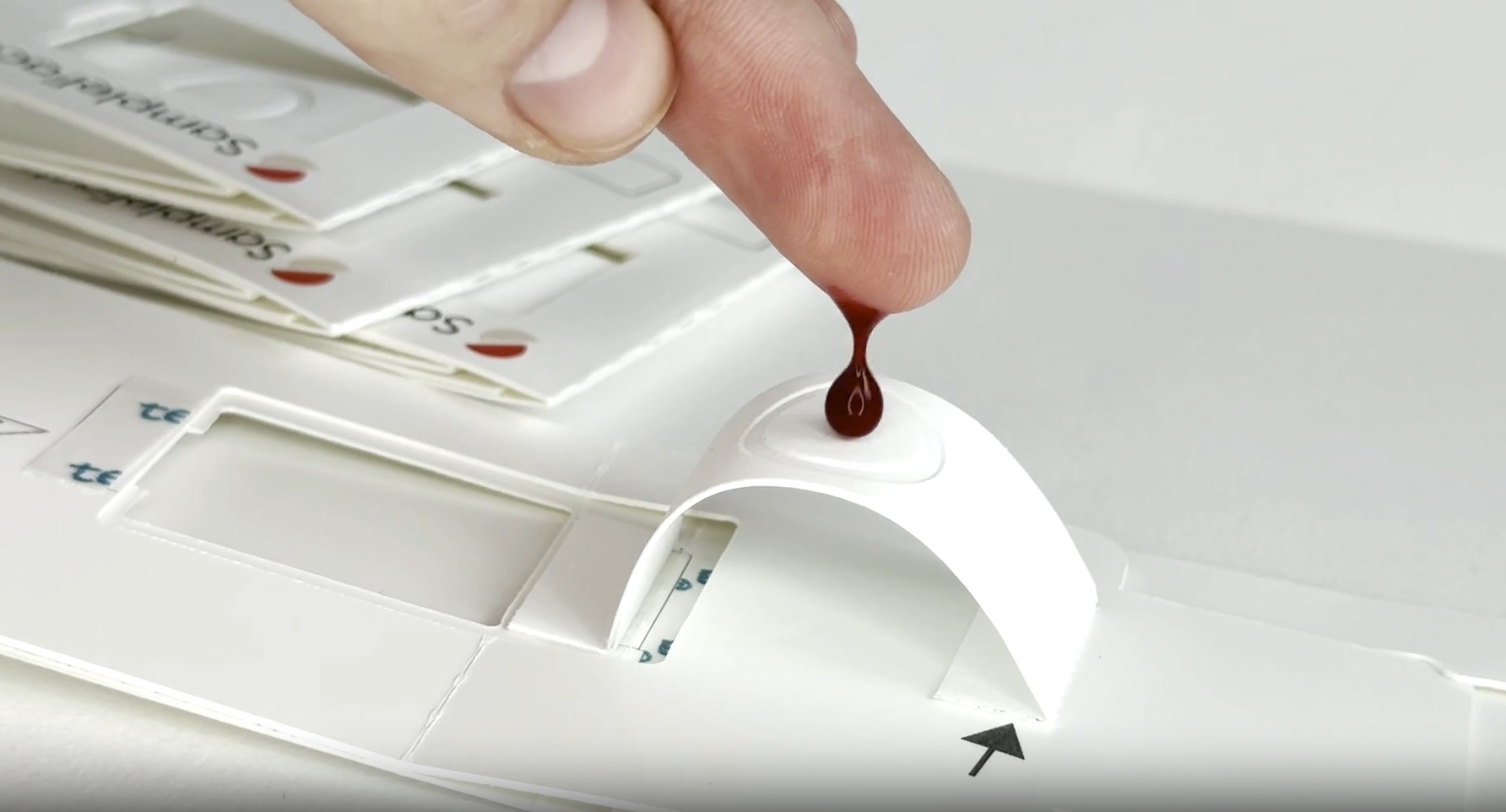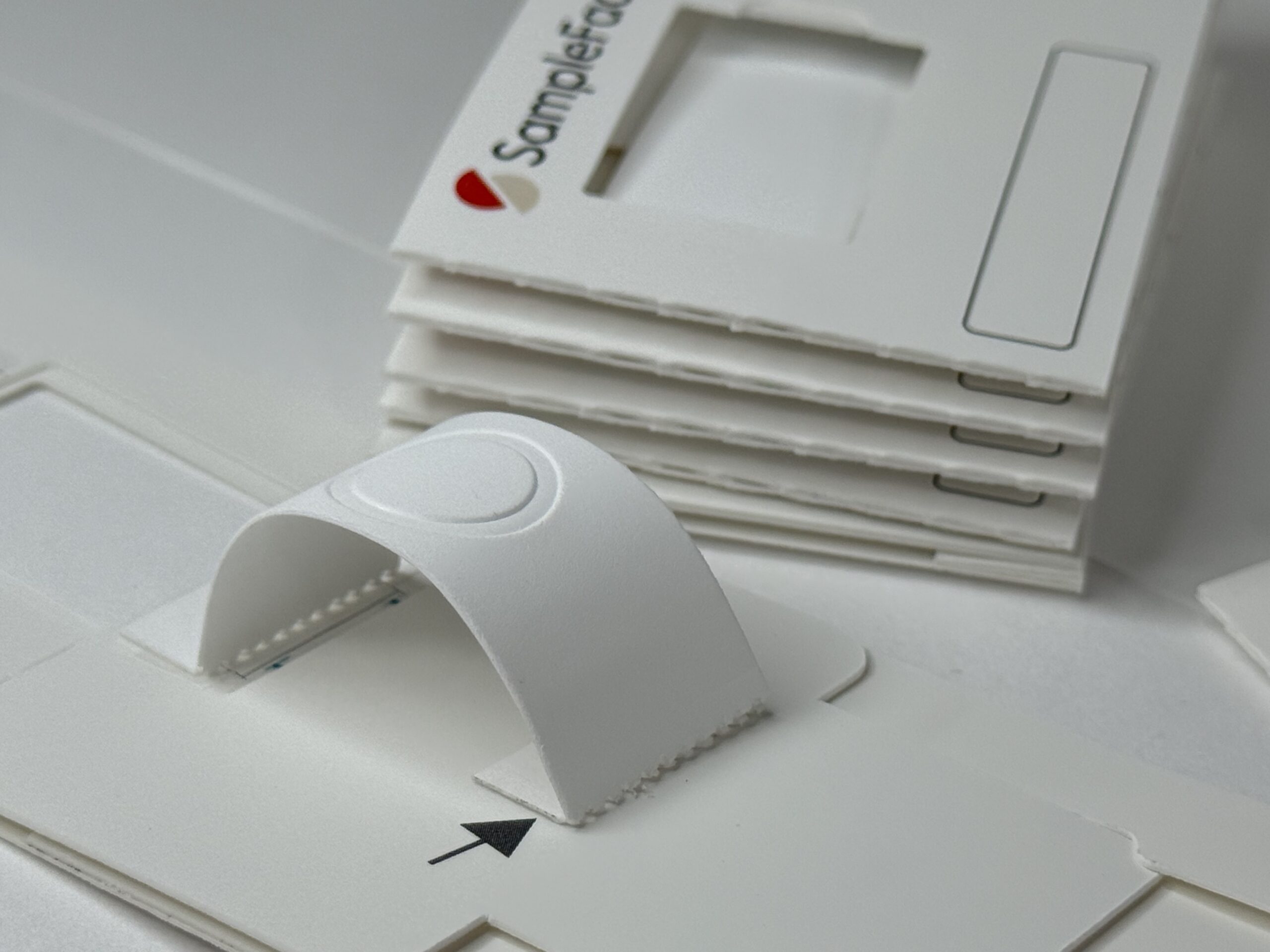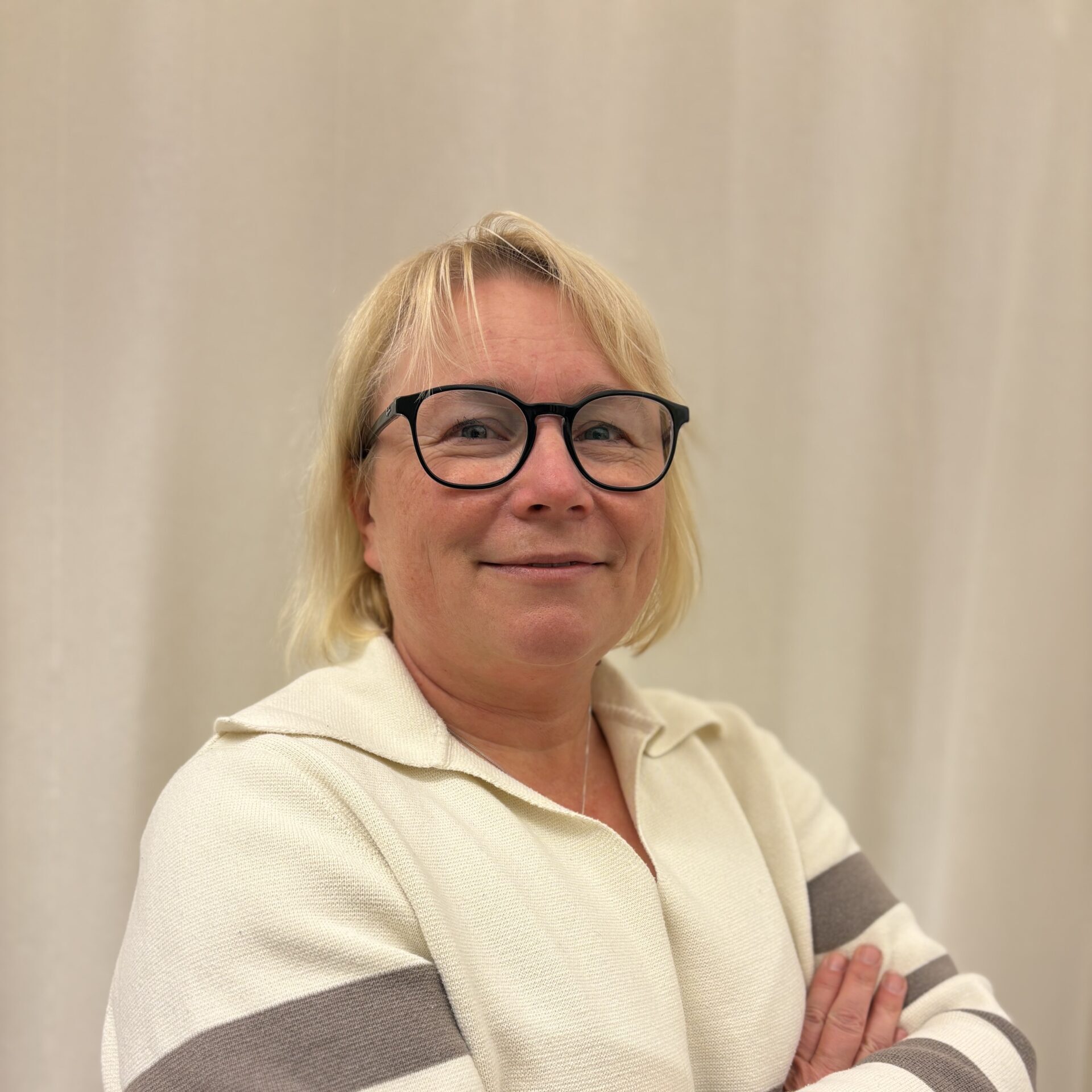
Technology

Separation – One Drop at the Time
The core technology of the company revolves around a unique way of simultaneously collecting blood cells and plasma samples – a necessity for separate analyses of cellular and liquid components of blood.

Separation Mechanism
SampleFacts InstaSep™ blood sampling device utilizes a combination of filtering and absorbing membranes to instantly separate whole blood into two distinct fractions: blood cells and plasma. When a drop of blood is applied to the top of the arch of the device, cells remain on the upper layer while plasma is efficiently transported by capillary forces to the lower membrane. These two fractions are then dried separately and may be sent by regular mail for storage and analysis.

Ease of Use
The InstaSep™ device is designed for simplicity, enabling easy collection and separation with no need for specialized skills or equipment. Samples collected using InstaSep™ are efficiently preserved and stable at room temperature, eliminating the need for low-temperature storage, thus making them suitable for remote sampling.

Sustainability
SampleFacts ensures eco-friendly practices by reducing waste and providing cost-effective alternatives to traditional venous blood collection. The dried blood samples are stored compactly and may be preserved without refrigeration, making them environmentally friendly.
DBS – A Tiny Drop, A Big Impact!
Dried Blood Spot (DBS) sampling is an established method for blood sample collection and storage where one or a few drops of blood are placed on filter papers, allowed to dry, and then used for analysis. The first DBS sampling method was established in the early 1900’s by Ivar Bang (Schmidt V. Ivar Christian Bang Clin Chem 32:213–215, 1986 ) and in the 1960’s Robert Guthrie introduced this technique for population screening (Li, W., Lee, M., Li, W., & Lee, M. Dried blood spots. Applications and Techniques, VIII-IX., 2014). The technique offers a minimally invasive, cost-effective, and convenient alternative to traditional venous blood draws. DBS sampling has assumed rapidly increasing importance with the emergence of high-throughput methods for DNA, RNA and protein analyses in minimal samples. The ability to separately collect dried blood cell and plasma samples using SampleFacts’ cards now extends the range of feasible analyses of dried blood samples.
Convenient
Minimally invasive
Cost-effective

“Empowering Remote Sampling: Advanced molecular techniques make it possible to analyze biomarkers from minimal blood samples— allowing for simplified blood collection for biobanking and for bringing diagnostics closer to the people than ever!”
Frida Ekholm, VP R&D

Kirigami
Inspired by the Japanese art of cutting and folding paper into a pop-up design, our patented technology utilizes kirigami. The art of kirigami is a variation of the well-known origami, where beautiful three-dimensional designs may be created. In our SampleFacts InstaSep™ device, drops of blood are added to a filtering and an absorbing membrane bent into an arch to ensure optimal contact between the membranes. The simplicity of the arch ensures instant separation of blood and plasma before drying, shipment, storage and analysis.
